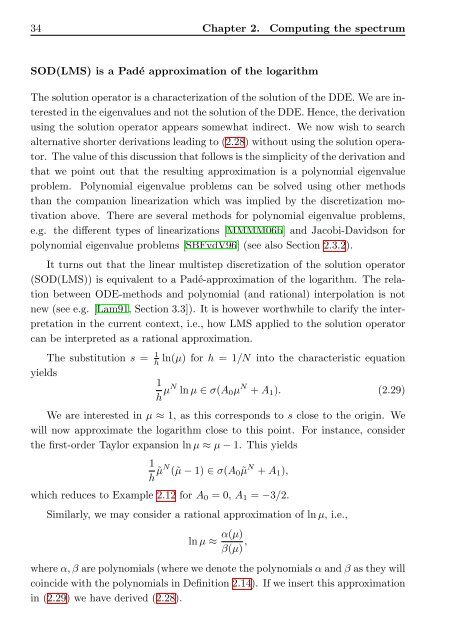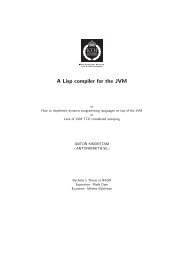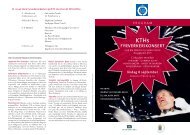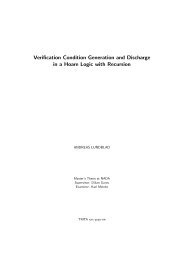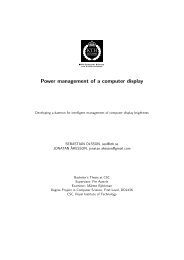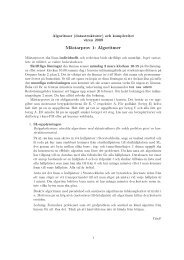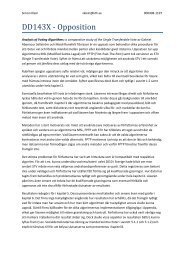The spectrum of delay-differential equations: numerical methods - KTH
The spectrum of delay-differential equations: numerical methods - KTH
The spectrum of delay-differential equations: numerical methods - KTH
Create successful ePaper yourself
Turn your PDF publications into a flip-book with our unique Google optimized e-Paper software.
34 Chapter 2. Computing the <strong>spectrum</strong><br />
SOD(LMS) is a Padé approximation <strong>of</strong> the logarithm<br />
<strong>The</strong> solution operator is a characterization <strong>of</strong> the solution <strong>of</strong> the DDE. We are interested<br />
in the eigenvalues and not the solution <strong>of</strong> the DDE. Hence, the derivation<br />
using the solution operator appears somewhat indirect. We now wish to search<br />
alternative shorter derivations leading to (2.28) without using the solution operator.<br />
<strong>The</strong> value <strong>of</strong> this discussion that follows is the simplicity <strong>of</strong> the derivation and<br />
that we point out that the resulting approximation is a polynomial eigenvalue<br />
problem. Polynomial eigenvalue problems can be solved using other <strong>methods</strong><br />
than the companion linearization which was implied by the discretization motivation<br />
above. <strong>The</strong>re are several <strong>methods</strong> for polynomial eigenvalue problems,<br />
e.g. the different types <strong>of</strong> linearizations [MMMM06b] and Jacobi-Davidson for<br />
polynomial eigenvalue problems [SBFvdV96] (see also Section 2.3.2).<br />
It turns out that the linear multistep discretization <strong>of</strong> the solution operator<br />
(SOD(LMS)) is equivalent to a Padé-approximation <strong>of</strong> the logarithm. <strong>The</strong> relation<br />
between ODE-<strong>methods</strong> and polynomial (and rational) interpolation is not<br />
new (see e.g. [Lam91, Section 3.3]). It is however worthwhile to clarify the interpretation<br />
in the current context, i.e., how LMS applied to the solution operator<br />
can be interpreted as a rational approximation.<br />
<strong>The</strong> substitution s = 1<br />
h ln(µ) for h = 1/N into the characteristic equation<br />
yields<br />
1<br />
h µN ln µ ∈ σ(A0µ N + A1). (2.29)<br />
We are interested in µ ≈ 1, as this corresponds to s close to the origin. We<br />
will now approximate the logarithm close to this point. For instance, consider<br />
the first-order Taylor expansion ln µ ≈ µ − 1. This yields<br />
1<br />
h ˜µN (˜µ − 1) ∈ σ(A0 ˜µ N + A1),<br />
which reduces to Example 2.12 for A0 = 0, A1 = −3/2.<br />
Similarly, we may consider a rational approximation <strong>of</strong> ln µ, i.e.,<br />
ln µ ≈ α(µ)<br />
β(µ) ,<br />
where α, β are polynomials (where we denote the polynomials α and β as they will<br />
coincide with the polynomials in Definition 2.14). If we insert this approximation<br />
in (2.29) we have derived (2.28).


